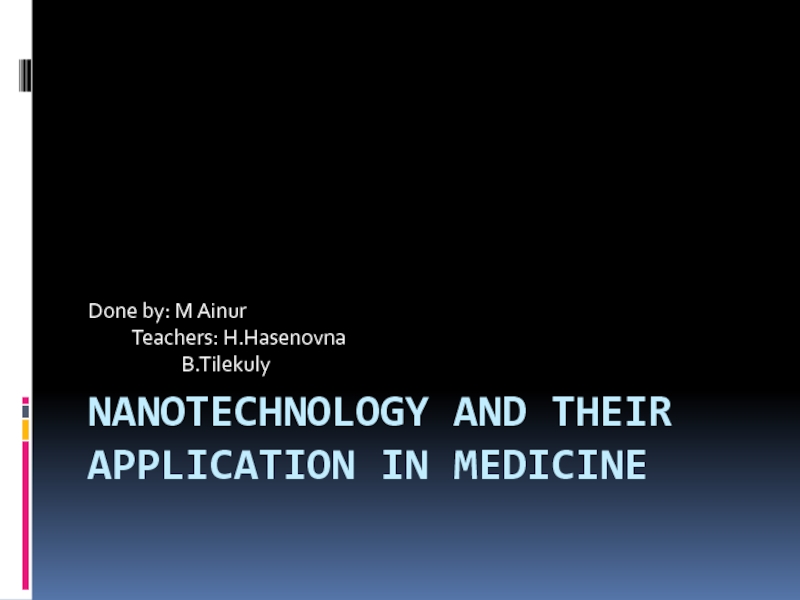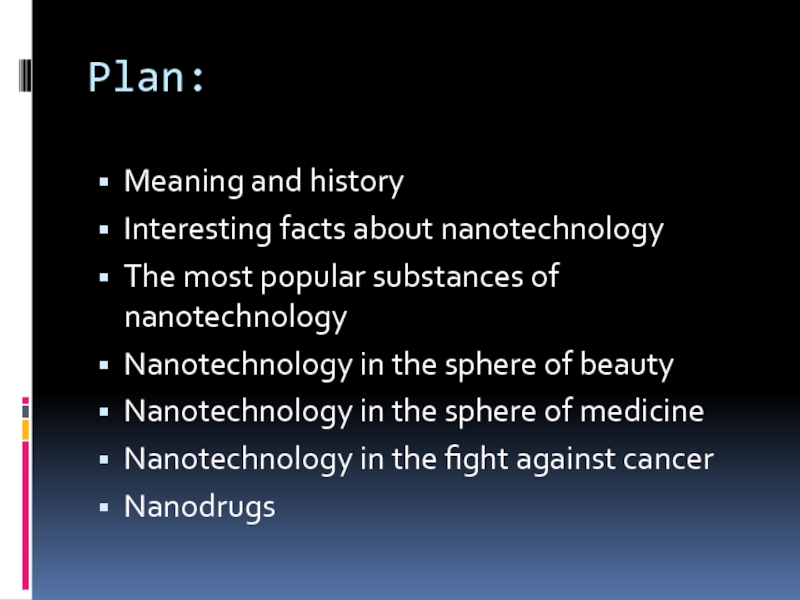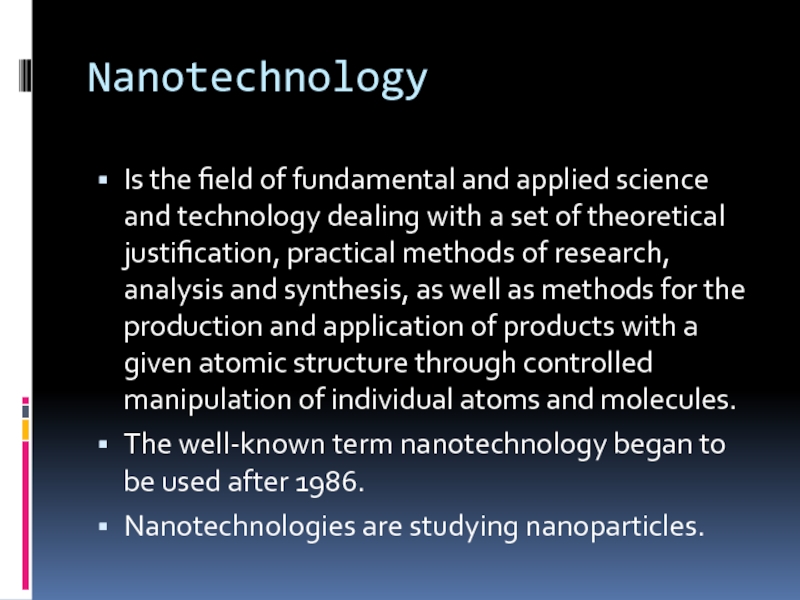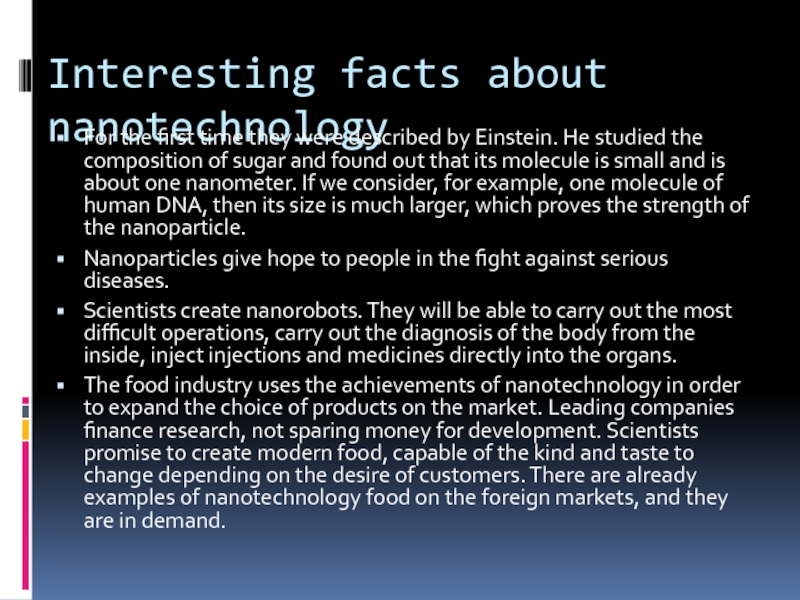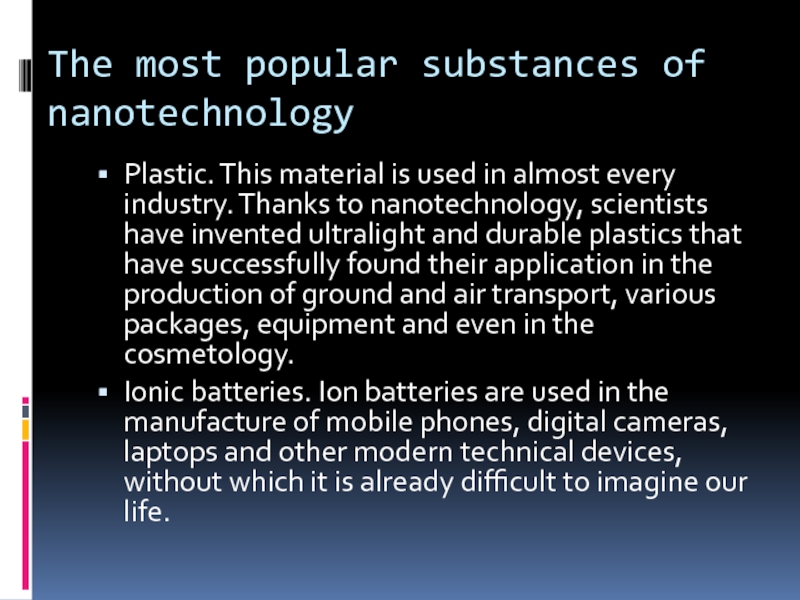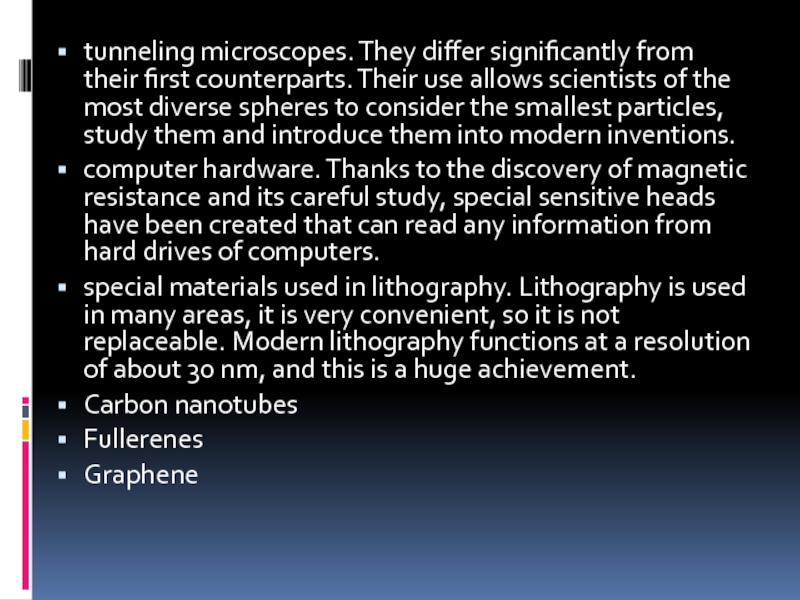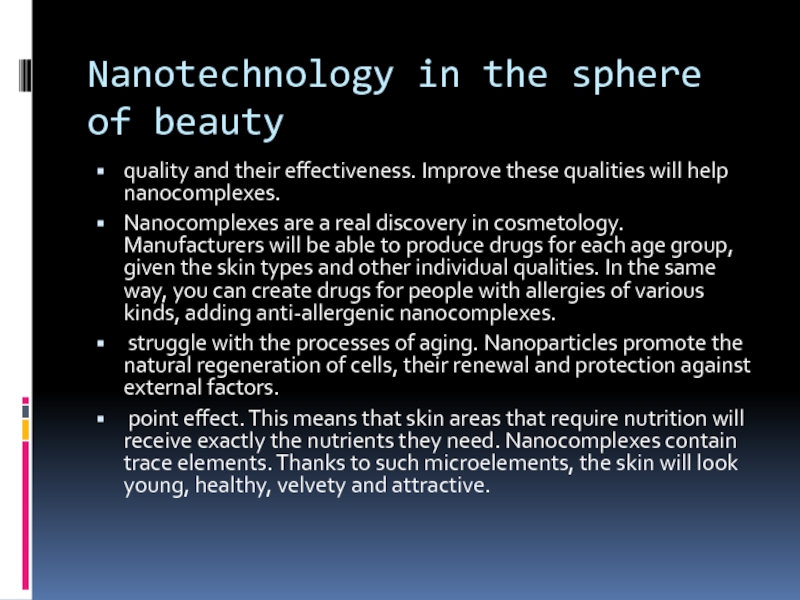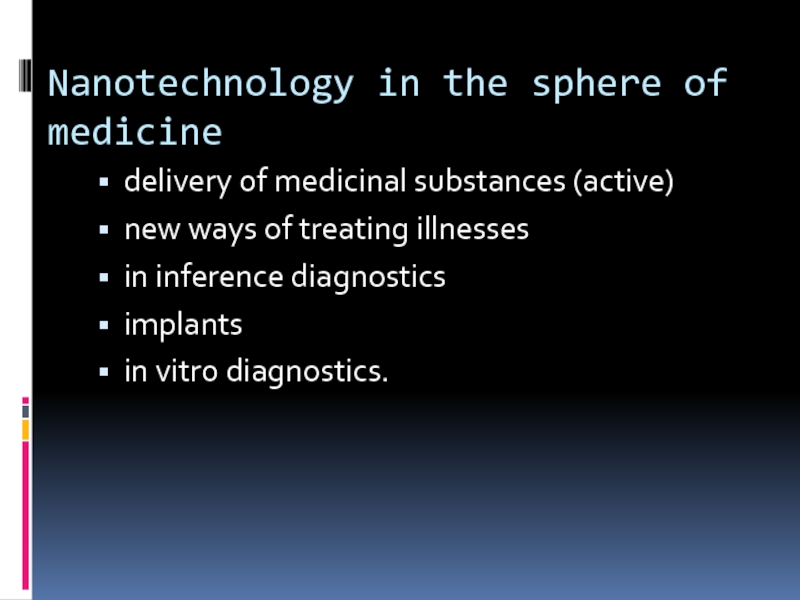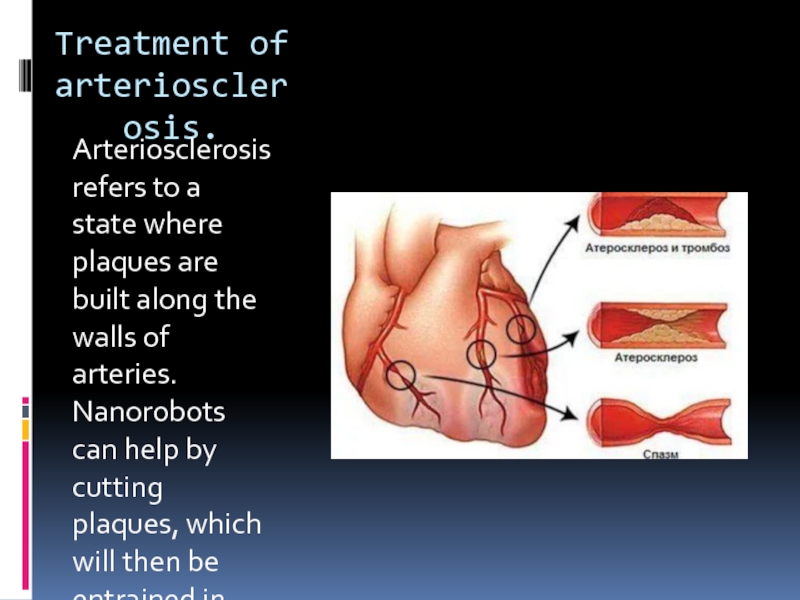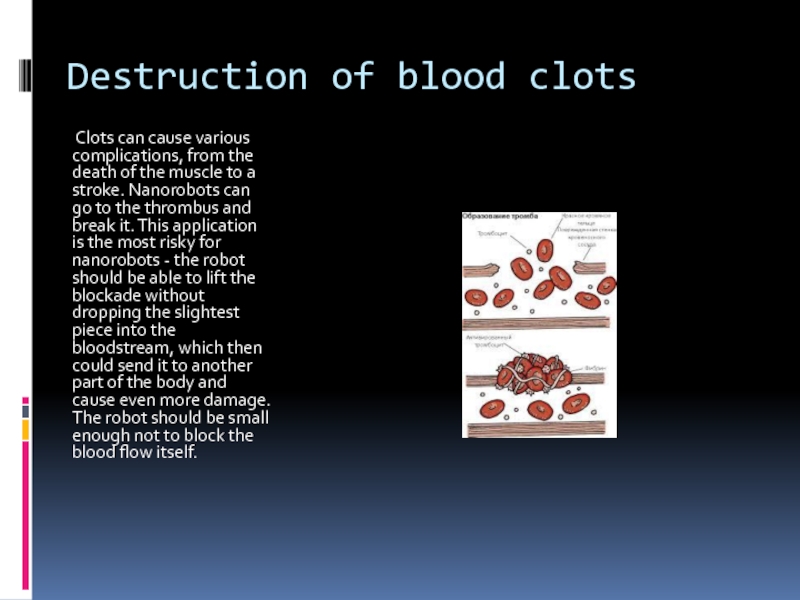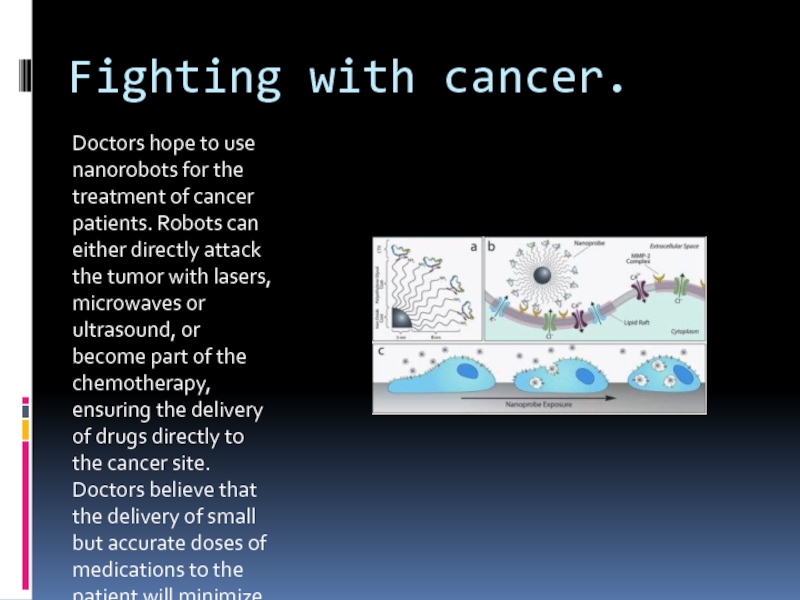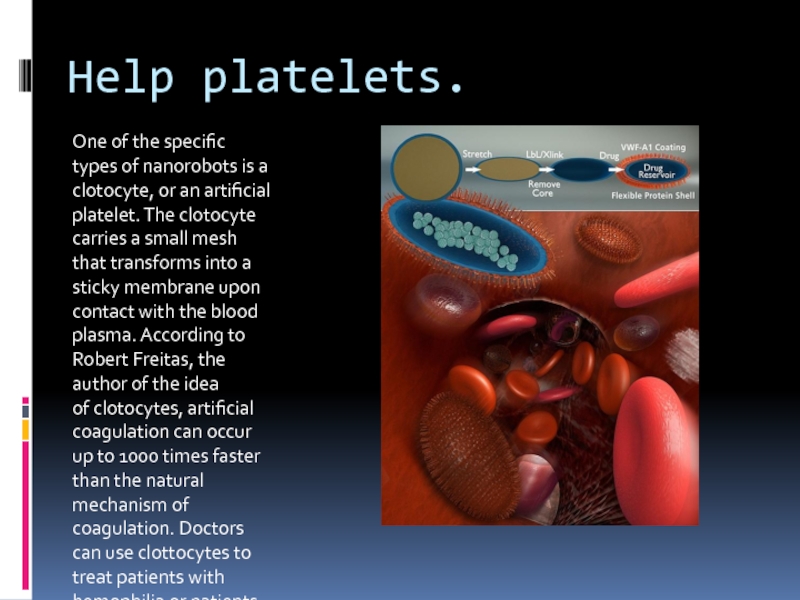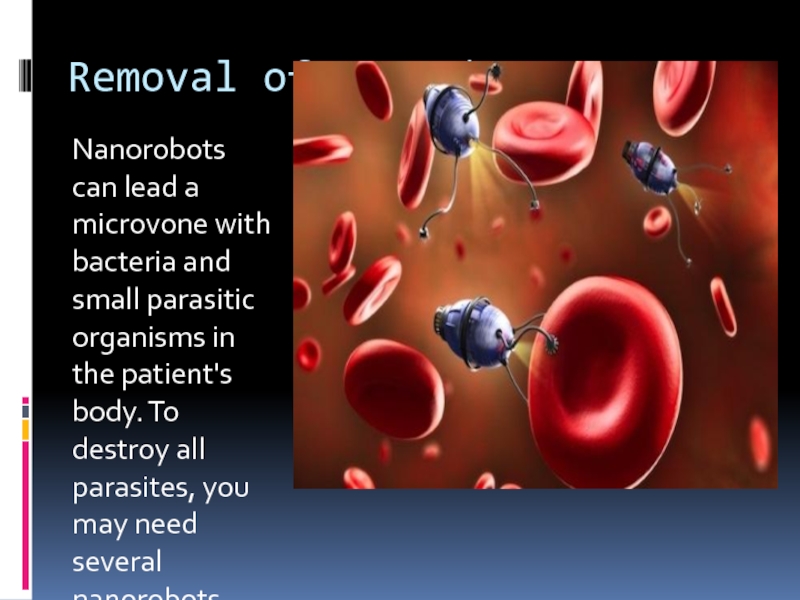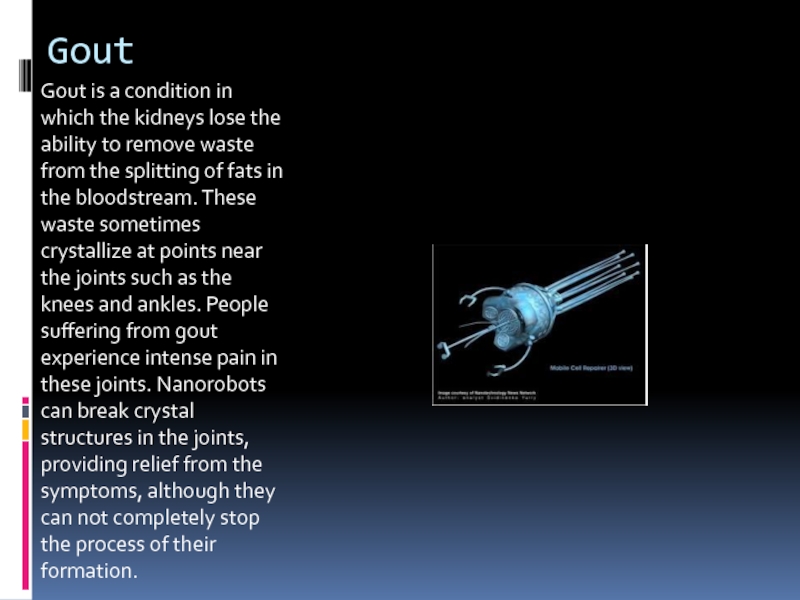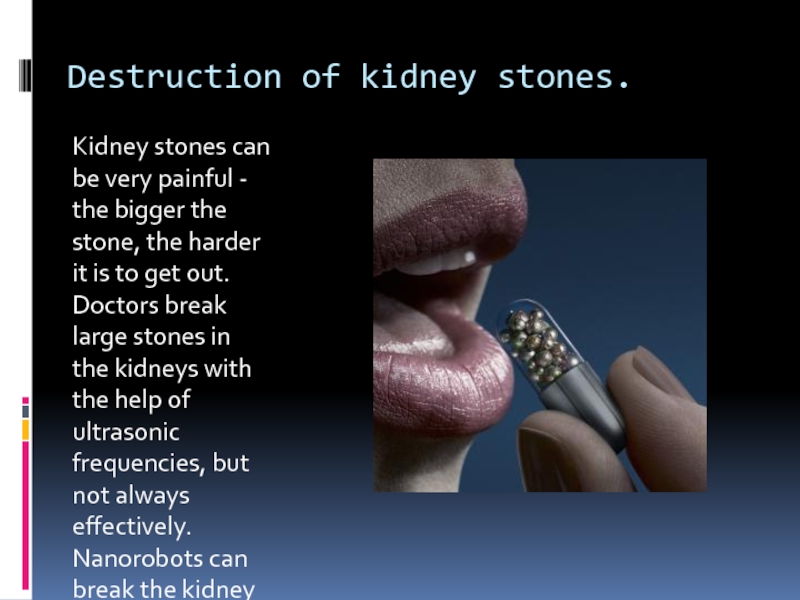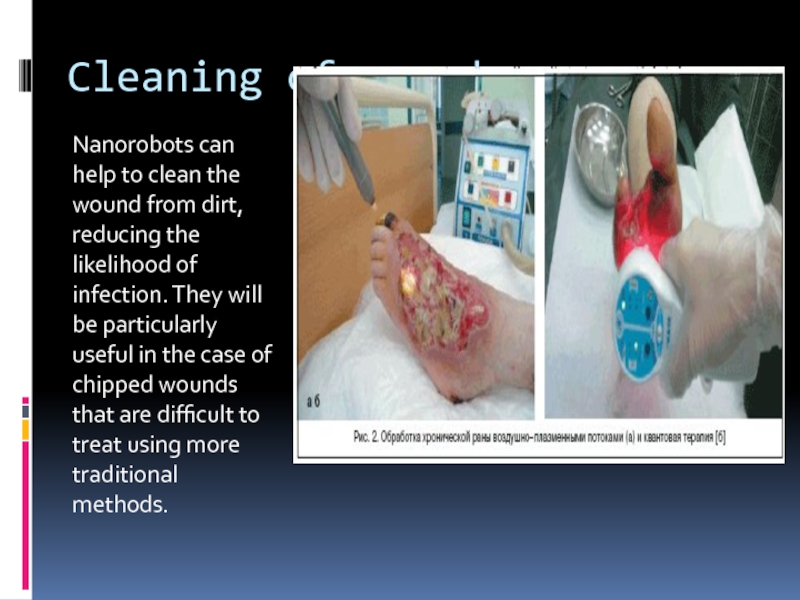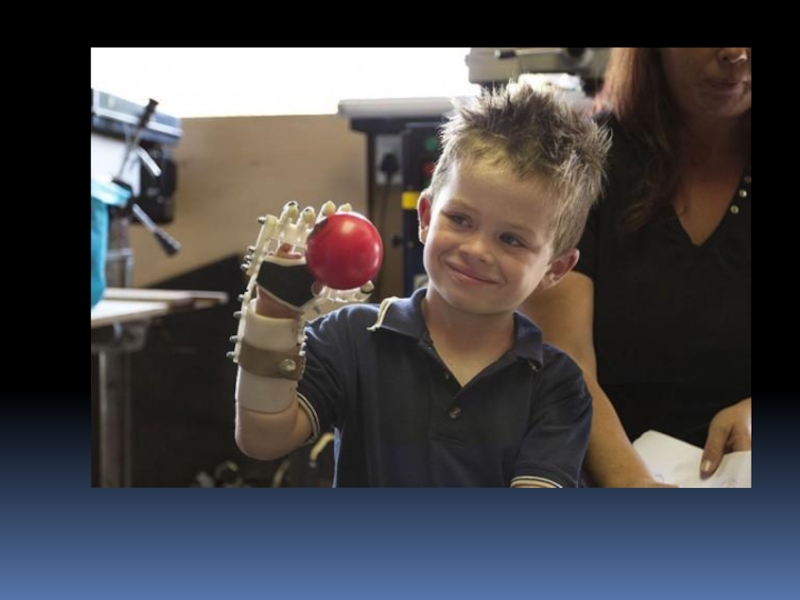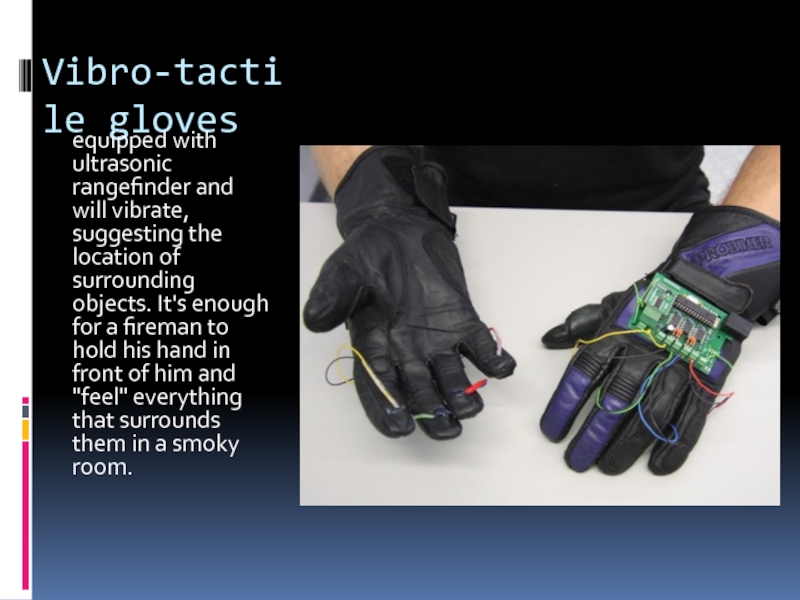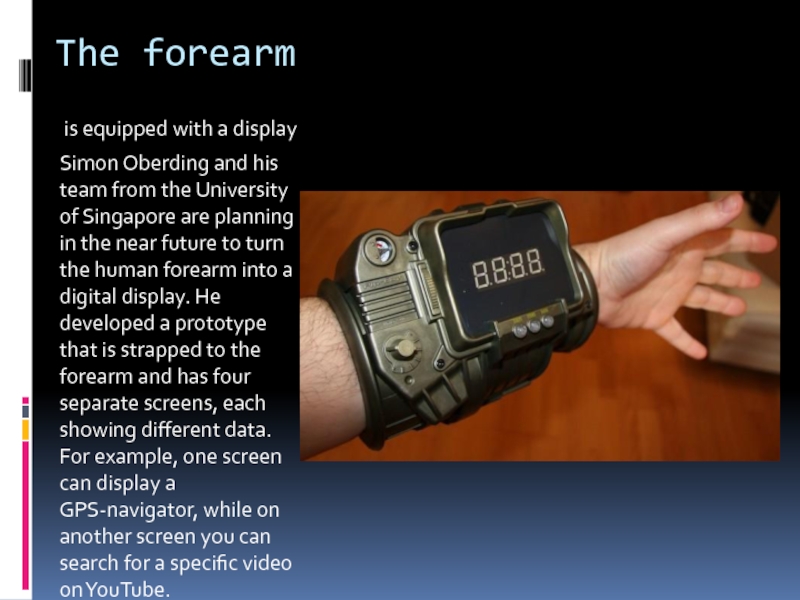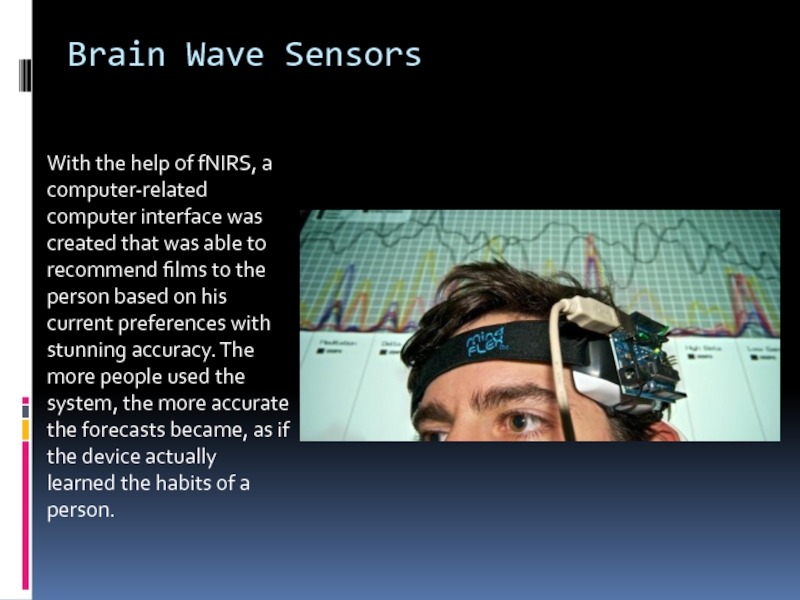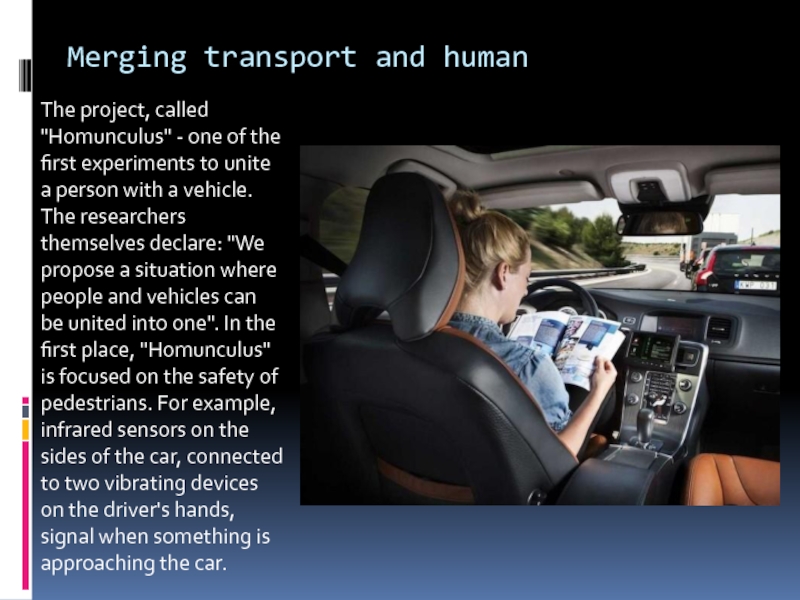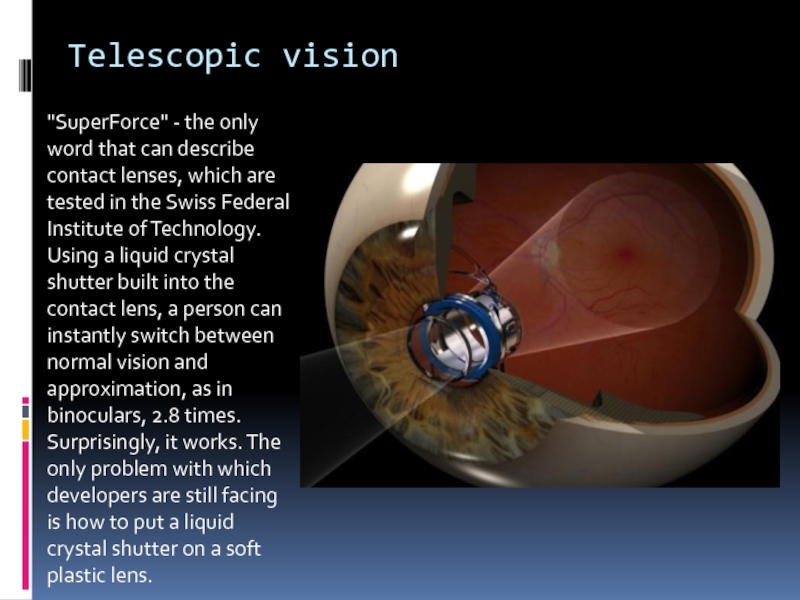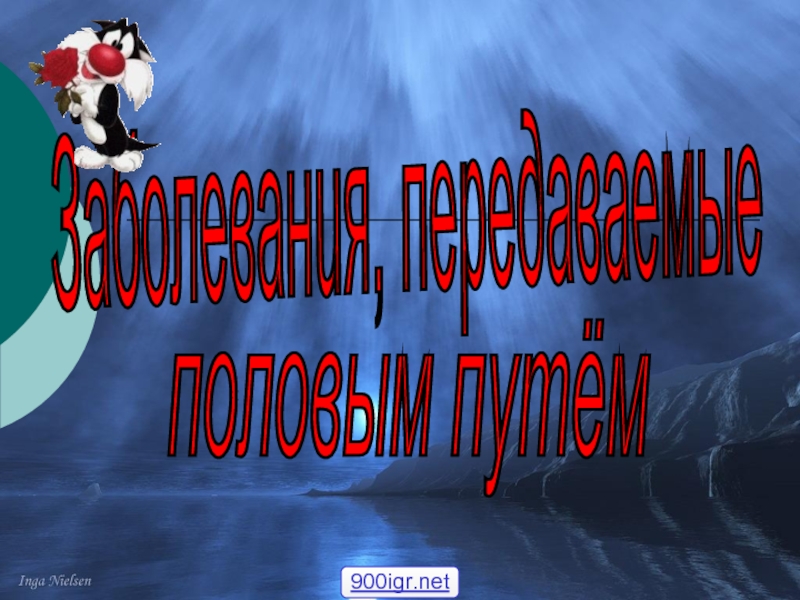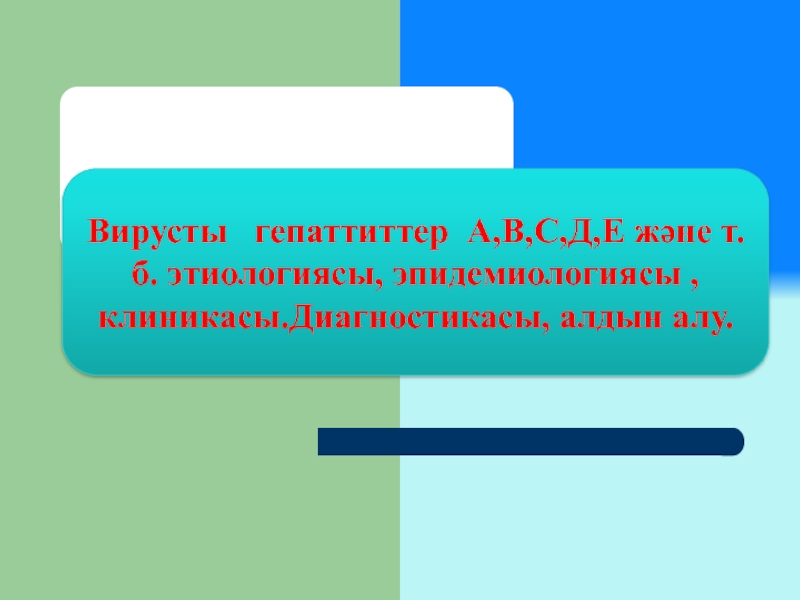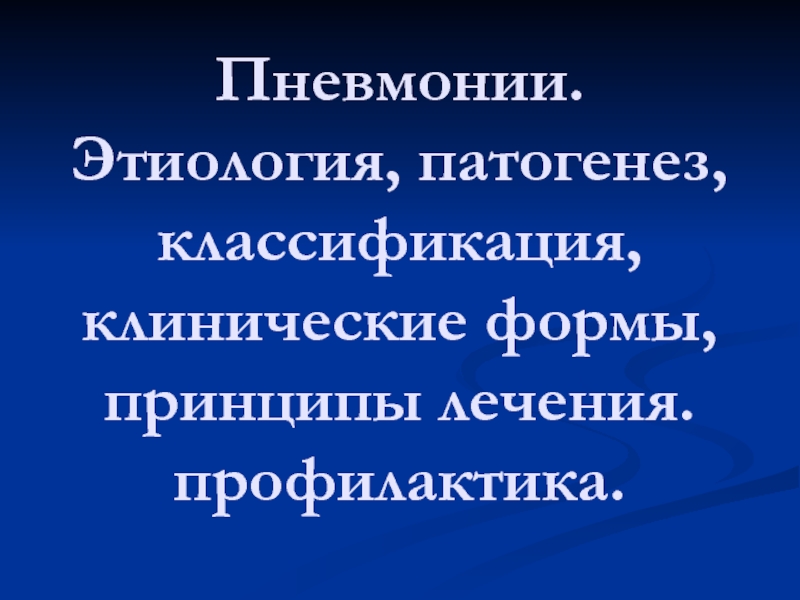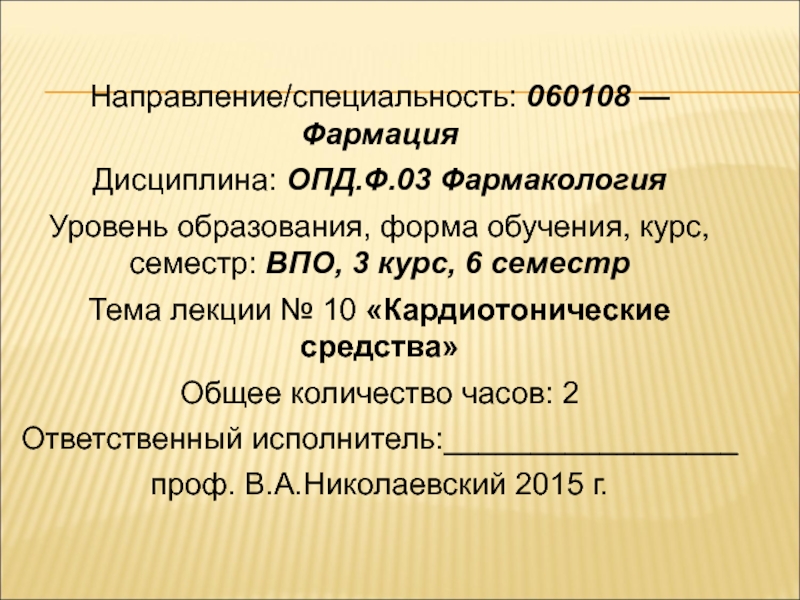Teachers: H.Hasenovna
B.Tilekuly
- Главная
- Разное
- Дизайн
- Бизнес и предпринимательство
- Аналитика
- Образование
- Развлечения
- Красота и здоровье
- Финансы
- Государство
- Путешествия
- Спорт
- Недвижимость
- Армия
- Графика
- Культурология
- Еда и кулинария
- Лингвистика
- Английский язык
- Астрономия
- Алгебра
- Биология
- География
- Детские презентации
- Информатика
- История
- Литература
- Маркетинг
- Математика
- Медицина
- Менеджмент
- Музыка
- МХК
- Немецкий язык
- ОБЖ
- Обществознание
- Окружающий мир
- Педагогика
- Русский язык
- Технология
- Физика
- Философия
- Химия
- Шаблоны, картинки для презентаций
- Экология
- Экономика
- Юриспруденция
Nanotechnology and their application in medicine презентация
Содержание
- 1. Nanotechnology and their application in medicine
- 2. Plan: Meaning and history Interesting facts about
- 3. Nanotechnology Is the field of fundamental and
- 4. Interesting facts about nanotechnology For the
- 5. The most popular substances of nanotechnology
- 6. tunneling microscopes. They differ
- 7. Nanotechnology in the sphere of beauty quality
- 8. Nanotechnology in the sphere of medicine
- 9. Treatment of arteriosclerosis. Arteriosclerosis refers to a
- 10. Destruction of blood clots Clots can
- 11. Fighting with cancer. Doctors hope to use
- 12. Help platelets. One of the specific types
- 13. Removal of parasites. Nanorobots can lead a
- 14. Gout Gout is a condition in which
- 15. Destruction of kidney stones. Kidney stones can
- 16. Cleaning of wounds Nanorobots can help to
- 18. Vibro-tactile gloves equipped with ultrasonic rangefinder
- 19. The forearm is equipped with a
- 20. Brain Wave Sensors With the
- 21. Merging transport and human The project,
- 22. Telescopic vision "SuperForce" - the only
Слайд 2Plan:
Meaning and history
Interesting facts about nanotechnology
The most popular substances of nanotechnology
Nanotechnology
in the sphere of beauty
Nanotechnology in the sphere of medicine
Nanotechnology in the fight against cancer
Nanodrugs
Nanotechnology in the sphere of medicine
Nanotechnology in the fight against cancer
Nanodrugs
Слайд 3Nanotechnology
Is the field of fundamental and applied science and technology dealing
with a set of theoretical justification, practical methods of research, analysis and synthesis, as well as methods for the production and application of products with a given atomic structure through controlled manipulation of individual atoms and molecules.
The well-known term nanotechnology began to be used after 1986.
Nanotechnologies are studying nanoparticles.
The well-known term nanotechnology began to be used after 1986.
Nanotechnologies are studying nanoparticles.
Слайд 4Interesting facts about nanotechnology
For the first time they were described by
Einstein. He studied the composition of sugar and found out that its molecule is small and is about one nanometer. If we consider, for example, one molecule of human DNA, then its size is much larger, which proves the strength of the nanoparticle.
Nanoparticles give hope to people in the fight against serious diseases.
Scientists create nanorobots. They will be able to carry out the most difficult operations, carry out the diagnosis of the body from the inside, inject injections and medicines directly into the organs.
The food industry uses the achievements of nanotechnology in order to expand the choice of products on the market. Leading companies finance research, not sparing money for development. Scientists promise to create modern food, capable of the kind and taste to change depending on the desire of customers. There are already examples of nanotechnology food on the foreign markets, and they are in demand.
Nanoparticles give hope to people in the fight against serious diseases.
Scientists create nanorobots. They will be able to carry out the most difficult operations, carry out the diagnosis of the body from the inside, inject injections and medicines directly into the organs.
The food industry uses the achievements of nanotechnology in order to expand the choice of products on the market. Leading companies finance research, not sparing money for development. Scientists promise to create modern food, capable of the kind and taste to change depending on the desire of customers. There are already examples of nanotechnology food on the foreign markets, and they are in demand.
Слайд 5The most popular substances of nanotechnology
Plastic. This material is used in
almost every industry. Thanks to nanotechnology, scientists have invented ultralight and durable plastics that have successfully found their application in the production of ground and air transport, various packages, equipment and even in the cosmetology.
Ionic batteries. Ion batteries are used in the manufacture of mobile phones, digital cameras, laptops and other modern technical devices, without which it is already difficult to imagine our life.
Ionic batteries. Ion batteries are used in the manufacture of mobile phones, digital cameras, laptops and other modern technical devices, without which it is already difficult to imagine our life.
Слайд 6
tunneling microscopes. They differ significantly from their first counterparts.
Their use allows scientists of the most diverse spheres to consider the smallest particles, study them and introduce them into modern inventions.
computer hardware. Thanks to the discovery of magnetic resistance and its careful study, special sensitive heads have been created that can read any information from hard drives of computers.
special materials used in lithography. Lithography is used in many areas, it is very convenient, so it is not replaceable. Modern lithography functions at a resolution of about 30 nm, and this is a huge achievement.
Carbon nanotubes
Fullerenes
Graphene
computer hardware. Thanks to the discovery of magnetic resistance and its careful study, special sensitive heads have been created that can read any information from hard drives of computers.
special materials used in lithography. Lithography is used in many areas, it is very convenient, so it is not replaceable. Modern lithography functions at a resolution of about 30 nm, and this is a huge achievement.
Carbon nanotubes
Fullerenes
Graphene
Слайд 7Nanotechnology in the sphere of beauty
quality and their effectiveness. Improve these
qualities will help nanocomplexes.
Nanocomplexes are a real discovery in cosmetology. Manufacturers will be able to produce drugs for each age group, given the skin types and other individual qualities. In the same way, you can create drugs for people with allergies of various kinds, adding anti-allergenic nanocomplexes.
struggle with the processes of aging. Nanoparticles promote the natural regeneration of cells, their renewal and protection against external factors.
point effect. This means that skin areas that require nutrition will receive exactly the nutrients they need. Nanocomplexes contain trace elements. Thanks to such microelements, the skin will look young, healthy, velvety and attractive.
Nanocomplexes are a real discovery in cosmetology. Manufacturers will be able to produce drugs for each age group, given the skin types and other individual qualities. In the same way, you can create drugs for people with allergies of various kinds, adding anti-allergenic nanocomplexes.
struggle with the processes of aging. Nanoparticles promote the natural regeneration of cells, their renewal and protection against external factors.
point effect. This means that skin areas that require nutrition will receive exactly the nutrients they need. Nanocomplexes contain trace elements. Thanks to such microelements, the skin will look young, healthy, velvety and attractive.
Слайд 8Nanotechnology in the sphere of medicine
delivery of medicinal substances (active)
new
ways of treating illnesses
in inference diagnostics
implants
in vitro diagnostics.
in inference diagnostics
implants
in vitro diagnostics.
Слайд 9Treatment of arteriosclerosis.
Arteriosclerosis refers to a state where plaques are built
along the walls of arteries. Nanorobots can help by cutting plaques, which will then be entrained in the bloodstream.
Слайд 10Destruction of blood clots
Clots can cause various complications, from the
death of the muscle to a stroke. Nanorobots can go to the thrombus and break it. This application is the most risky for nanorobots - the robot should be able to lift the blockade without dropping the slightest piece into the bloodstream, which then could send it to another part of the body and cause even more damage. The robot should be small enough not to block the blood flow itself.
Слайд 11Fighting with cancer.
Doctors hope to use nanorobots for the treatment of
cancer patients. Robots can either directly attack the tumor with lasers, microwaves or ultrasound, or become part of the chemotherapy, ensuring the delivery of drugs directly to the cancer site. Doctors believe that the delivery of small but accurate doses of medications to the patient will minimize the side effects and loss of drug effectiveness.
Слайд 12Help platelets.
One of the specific types of nanorobots is a clotocyte,
or an artificial platelet. The clotocyte carries a small mesh that transforms into a sticky membrane upon contact with the blood plasma. According to Robert Freitas, the author of the idea of clotocytes, artificial coagulation can occur up to 1000 times faster than the natural mechanism of coagulation. Doctors can use clottocytes to treat patients with hemophilia or patients with severe open wounds.
Слайд 13Removal of parasites.
Nanorobots can lead a microvone with bacteria and small
parasitic organisms in the patient's body. To destroy all parasites, you may need several nanorobots working together.
Слайд 14Gout
Gout is a condition in which the kidneys lose the ability
to remove waste from the splitting of fats in the bloodstream. These waste sometimes crystallize at points near the joints such as the knees and ankles. People suffering from gout experience intense pain in these joints. Nanorobots can break crystal structures in the joints, providing relief from the symptoms, although they can not completely stop the process of their formation.
Слайд 15Destruction of kidney stones.
Kidney stones can be very painful - the
bigger the stone, the harder it is to get out. Doctors break large stones in the kidneys with the help of ultrasonic frequencies, but not always effectively. Nanorobots can break the kidney stones using a small laser.
Слайд 16Cleaning of wounds
Nanorobots can help to clean the wound from dirt,
reducing the likelihood of infection. They will be particularly useful in the case of chipped wounds that are difficult to treat using more traditional methods.
Слайд 18Vibro-tactile gloves
equipped with ultrasonic rangefinder and will vibrate, suggesting the location
of surrounding objects. It's enough for a fireman to hold his hand in front of him and "feel" everything that surrounds them in a smoky room.
Слайд 19The forearm
is equipped with a display
Simon Oberding and his team
from the University of Singapore are planning in the near future to turn the human forearm into a digital display. He developed a prototype that is strapped to the forearm and has four separate screens, each showing different data. For example, one screen can display a GPS-navigator, while on another screen you can search for a specific video on YouTube.
Слайд 20Brain Wave Sensors
With the help of fNIRS, a computer-related computer interface
was created that was able to recommend films to the person based on his current preferences with stunning accuracy. The more people used the system, the more accurate the forecasts became, as if the device actually learned the habits of a person.
Слайд 21Merging transport and human
The project, called "Homunculus" - one of the
first experiments to unite a person with a vehicle. The researchers themselves declare: "We propose a situation where people and vehicles can be united into one". In the first place, "Homunculus" is focused on the safety of pedestrians. For example, infrared sensors on the sides of the car, connected to two vibrating devices on the driver's hands, signal when something is approaching the car.
Слайд 22Telescopic vision
"SuperForce" - the only word that can describe contact lenses,
which are tested in the Swiss Federal Institute of Technology. Using a liquid crystal shutter built into the contact lens, a person can instantly switch between normal vision and approximation, as in binoculars, 2.8 times. Surprisingly, it works. The only problem with which developers are still facing is how to put a liquid crystal shutter on a soft plastic lens.
